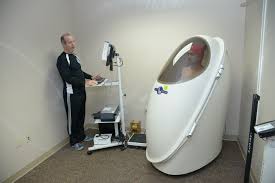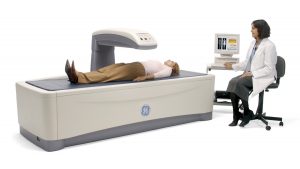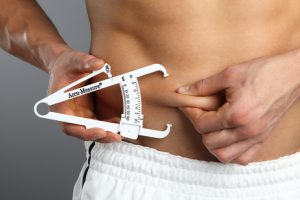What are the best tools for measuring Obesity?
Hello readers, today I will be sharing with you the most reliable tools by which you can assess your body fat percentage to determine whether you are obese or overweight and know the associated health risks.
I.Three parameters are very important in the measurement of obesity and its risks :
They are:
1. BMI
2. BODY FAT %
3. WAIST-HIP RATIO
1.How to Calculate BMI?

A healthy weight allows you to be energetic, brisk, and lets you live a fulfilling life.
The first step in finding out if your weight is ideal or not is to check your BMI or the Body Mass Index.
BMI takes into account your height and weight and indicates if you are underweight, normal, overweight or obese. This applies to adults over the age of 20 and is not age or gender specific.
Your weight (in kilograms) ÷ [your height (in meters) x your height (in meters)] = BMI.
For example, 60 kilograms ÷ (1.65 meters x 1.65 meters) = 22.03.
Please note that BMI is not an accurate tool to be used for clinical diagnosis but it can be used as a screening tool to identify potential weight issues in adults. A person can have a high BMI, overweight status, especially bodybuilders with good muscle mass.
A woman can have normal BMI but still can have more body fat.
BMI can’t give accurate measurements of “Body Fat and Muscle Mass” but still, it’s one of the best available screening tools to know Healthy Weight Status.
2. Body Fat Percentage :
Body fat is the amount of fat in your body, compared to everything else.
By evolution, women have more body fat than men due to the demands of childbearing and hormonal changes occurring in their body.
II. How to Measure Body Fat ?
1. Look Method :

The easiest method, look at the accurate list of pictures with body % online and comparing a picture of yourself.
2.Body Fat Clippers :
Pull fat away from muscles pinch them with a caliper, measure and compare with the chart. “The Jackson-Pollack Three Skinfold Sites” formula is accurate.
The Jackson-Pollack method for evaluating body fat percentage takes into consideration three skinfold measurement. For men, the measurement sites are the chest, abdomen, and thigh; while for women, they consist of the thigh, triceps and suprailiac crest, or just above the top of the hip bone.
Men – CHEST (halfway between the nipple and armpit), ABDOMEN (about 1 inch right to your navel), THIGH (halfway between hip and the knee).
Women – TRICEPS (halfway between the bone at the top of your shoulder and elbow), suprailiac (just above the top ride of your hip bone), THIGH (halfway between hip and the knee).
3.The BOD POD:

The BOD POD uses the technique ADP which is also known as Air Displacement Plethysmograph to determine your body composition i.e. (the ratio of fatty mass to lean mass). Body composition is divided into two body mass categories (fat mass & lean mass). The Fat mass consists of all the adipose tissue (fat) present in your body and the Lean mass consists of bone, bodily fluid (blood), organs, and skeletal muscle.
The BOD POD test provides results of these two categories expressed as percentages of total body mass.This method is very accurate but expensive.
4. Dexa Sanning or Dual-Energy X-Ray Absorptiometry:
 DEXA scan shows the fat and lean mass distribution for the entire body. The greatest benefit of this test is that it is reliable and can detect even small changes in the body composition. This is one of the most accurate method but more on the expensive side.
DEXA scan shows the fat and lean mass distribution for the entire body. The greatest benefit of this test is that it is reliable and can detect even small changes in the body composition. This is one of the most accurate method but more on the expensive side.
I personally recommend the simple body fat caliper along with ‘look method’
Note: Essential fat % mentioned above in the chart is the minimal amount of fat required for survival. Anything less than that is dangerous.
Even professional bodybuilders minimize body fat to essential fat only during prepping for the show, rest of the year they maintain higher fat %.
“MEN, WHO HAVE SIX PACKS, MAINTAIN FAT % ANYWHERE BETWEEN 6 to 13%.”
III. Waist-Hip Ratio and Waist Measurement :
It is not only important to assess the total amount of body fat, but also the distribution of the fat counts.
WAIST SIZE may be a better predictor of good health when compared to BMI.
A waist size of more than 35 inches (or 88 cm) in women and over 40 inches (or 102 cm) in men is unhealthy.
Having weight around the waist is a clear sign of VISCERAL FAT.
Visceral fat is that fat which wraps around organs, interrupting with their regular function. This abdominal fat is linked to chronic lifestyle diseases like diabetes, Heart disease, metabolic disturbances, and sleep apnea.
Most people store their body fat in two distinct ways: 1) around their middle (apple shape) and 2) around their hips (pear shape).
WAIST-TO-HIP RATIO also known as the waist-hip ratio is the circumference of the waist divided by the circumference of the hip.
WHR= Waist circumference/Hip circumference.
Weight around the waist has a greater risk of lifestyle-related diseases such as heart disease and diabetes than those with weight around their hips.
Ideally, women should have a waist-to-hip ratio of 0.80 or less, whereas men should have a waist-to-hip ratio of 0.95 or less.
IV.How to measure waist-to-hip ratio?
1. Stand up straight and exhale. Use a measuring tape to check the distance around your waist, just above your belly button. This is your waist circumference.
2. Then measure the distance around the largest part of your hips — the widest part of your buttocks. This is your hip circumference.
3. Calculate your WHR by dividing your waist circumference by your hip circumference.
WHR has been shown to be a better predictor of cardiovascular disease than waist circumference.
Some other studies have found waist circumference, not WHR, as a better indicator of cardiovascular risk factors.
High WHR also increases the risk for diabetes, autoimmune diseases, and even cancers. In women, Low WHR is also linked to attractiveness and good fertility rates.





2 Comments